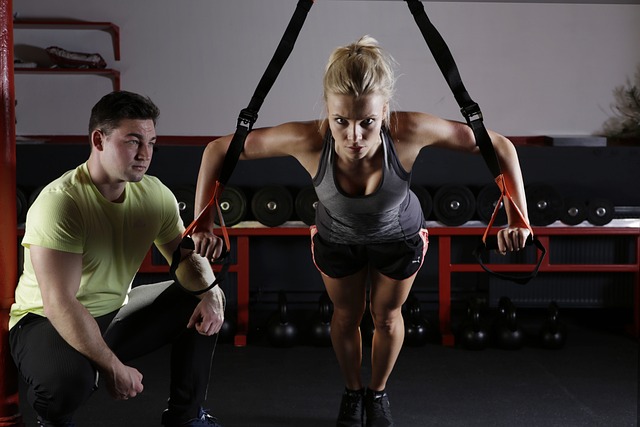You probably don’t jump with pleasure when you hear the word “cardio.” Rather, most people envision folks plodding along on a treadmill or sweating profusely on a bike. But exercise can be so much more than slaving away for hours on a piece of cardio equipment.
So, regardless matter how well-equipped your home gym is (or if you don’t have one at all), you can fit in a good and worthwhile cardio workout at home. Here’s all you need to know about home cardio workouts.
What Exactly Is Cardio?
The term “cardio” simply refers to a type of exercise that works the circulatory system. In other words, it is an exercise that is designed to stress your heart and lungs while improving blood flow throughout your entire body.
Walking, jogging, cycling, dancing, or jumping rope are all exercises that target this system and cause your muscles to require extra oxygen to execute the metabolic processes required to maintain the increased movement.
As a result, you begin to breathe more deeply and deeply, and your heart begins to beat faster and harder in order to pump your blood through your venous system and give additional oxygen to your working muscles.
Benefits of Cardio
The major benefit of cardio is to improve or maintain your heart and lung health. Indeed, higher levels of cardiovascular activity are linked to lower levels of cardiovascular illness as well as other physiologic adaptations that appear to protect against heart attacks, strokes, and respiratory disorders.
This is critical because the leading cause of death in the United States is cardiovascular disease, with one person dying from the disease every 34 seconds. Equally alarming is the fact that many heart attacks (1 in 5) occur “silently,” meaning that the damage is done, but the individual experiencing the heart attack is unaware of it.
You can reduce your risk of becoming one of these devastating figures by incorporating aerobic activities into your regimen on a regular basis.
Cardio activities can also help prevent or treat type 2 diabetes, increase mental health and confidence, alleviate anxiety and depression symptoms, and improve sleep. These routines can also help you maintain or reduce weight, as well as improve your sexual life.
Types of Cardio
Walking, riding a bike, or joining a Zumba class may be the first things that come to mind when you think about cardiac exercise. However, it is critical not to limit oneself to the most popular selections.
Cardiovascular workouts are defined as any exercise that uses numerous large muscle groups to undertake continuous activity that raises your heart rate and breath rate. When it comes to cardio, there are so many possibilities that you should never become bored. Feel free to switch it up and do the ones you enjoy the most.
Cardio exercises can include:
- Walking on a treadmill, taking a walk, or marching in place
- Running on a treadmill, going for a run, or running in place are all options.
- Riding a stationary or conventional bicycle
- Using a rowing machine or rowing a boat
- Staircase Climbing
- Jumping Rope
- Jumping jacks or other full-body movements
- Dancing alone, with others, or as part of a group
- Completing an online cardio class
- Performing a high-intensity interval training (HIIT) or circuit-training session… even one focusing on strength-based workouts.
- Active video gameplay
- Playing tag or chasing your children
- Swimming
- Snowshoeing
- Skiing on the cross-country course
- Trampolines are used for jumping
How to Exercise at Home
In theory, performing cardio at home is relatively simple in terms of logistics. Choose an activity and simply carry it out.
However, the reality of completing a cardio workout at home is a little more subtle.
Here are some suggestions for ensuring that you have the proper space and equipment for your home workout, as well as guidelines for ensuring that you complete your cardio workouts on a regular basis.
Ascertain Your Activity and Equipment Requirements
There are several exercises that don’t require any equipment, such as jumping jacks, running in place, HIIT workouts, dancing, and walking stairs. Others, though, such as treadmill walking, jumping rope, and using a mini trampoline, do necessitate the use of equipment. If you don’t already have the equipment, you should think about your money, space, and commitment to the workout before making an investment.
Consider Your Workout Area at Home
If you have a dedicated area for a home gym, you may not be concerned about equipment or full-body workouts, but if you’re short on space, it’s something you should seriously consider. For example, while jumping rope does not require much floor space, it does require quite an amount of vertical room to account for the spinning rope.
While it is possible to perform a jump rope workout outside with a more open vertical area, will you want to do so when it is chilly or raining? Many machine-based workouts, on the other hand, necessitate the use of equipment that takes up a lot of floor space. Before purchasing a treadmill, you should consider whether you have adequate space.
Determine whether your home workouts will take place inside or outside.
Taking your cardio workout outside to your porch or deck is a great way to offer yourself some extra space to move about, but weather-related considerations are important and should not be overlooked. Will you be mentally tough enough to keep working out even when Mother Nature isn’t cooperating? And if not, do you have a backup plan for transitioning to an indoor workout?
Consider How to Prioritize Your Home Workout
One of the most serious disadvantages of home-based cardio is the possibility of distraction. If you exercise when your partner or children are present, you must have a strategy in place to limit interruptions and diversions.
Similarly, the appeal of the dirty dishes in the sink or the TV in the other room may be enough to entice you to abandon your exercise regimen. You must choose how you will keep these obstacles from derailing your greatest intentions.
Put your workouts on your calendar.
Schedule your workouts and identify yourself as “unavailable” during this period on your calendar. Put the days, times, and types of workouts you intend to do on your calendar at the start of the week. Share your schedule with your family ahead of time so that they are all aware that you will not be available for (non-emergency) interruptions during this period.
Plan Your Workouts Ahead of Time
Plan your workout ahead of time and prepare your tools or supplies before you begin. Knowing what you’re going to accomplish before you start your workout helps decrease some of the “static” that can make starting a workout difficult.
Before you begin a HIIT workout, determine which exercises and equipment you will require. Make sure your shoes, clothing, and equipment are all set to go. That way, when it’s time to work out, all you have to do is change your clothing and get started.
Aim for five days of cardio per week.
Aim for 30 minutes of cardio five days a week. According to exercise recommendations, healthy adults should engage in 150 minutes of moderate-intensity exercise every week for health reasons.
That equates to 30 minutes per day, five days per week. However, not all of the exercises must be completed at the same time. You’ll be able to make the deadline if you work for 15 minutes in the morning and 15 minutes at lunch.
Find a Workout Partner or a Trainer.
Enlist the assistance of a friend or trainer (even a virtual one). If you struggle with motivation and perform better with additional accountability, ask if you can work out with a trainer or a friend.
A trainer can design and oversee your workouts, or a friend can join in on the fun, challenge, and encouragement. Both have advantages, and both can make home workouts more pleasurable and sustainable.
Change Things Up
Doing the same old walking routine day in and day out for months may work for some people, but if you become bored easily, don’t be afraid to switch things up. Boredom can be relieved by dancing one day, jumping on a mini-trampoline the next, and completing a HIIT workout the next.
Changing things up will also push different muscle groups in new ways. If you vary your workouts on a daily basis, you may notice that you get better health results faster (and have more fun).
Keep an eye on your intensity level.
Whether you wear a heart rate monitor or prefer to base your intensity level on your own rating of perceived exertion (RPE), it’s critical to push yourself hard enough to effectively test your cardiovascular system. This indicates that for each cardio program, you should exercise at a moderate- to vigorous-intensity level.
Make an effort to be consistent.
Constant exercise is easier said than done, yet the health-related benefits of cardio can only be realized through consistent activity. While beginning a routine may appear difficult, make a commitment to yourself to stick with it for at least three months to form a habit. Once the habit is established and you begin to reap the benefits, it will be much simpler to stay on track, even when life becomes difficult.
To Conclude
Cardio exercise, whether done at home, outside or at a gym, is a vital way to enhance and maintain heart health. Furthermore, not only will you benefit your cardiovascular system, but you may also notice that your energy level and mood increase.
If you’ve lately suffered injuries, or just haven’t worked out lately, or illnesses that may have an effect on your cardio activity, consult with a healthcare professional or physical therapist. They may evaluate your condition, fitness level, and goals and assist you in determining what is best for you.



